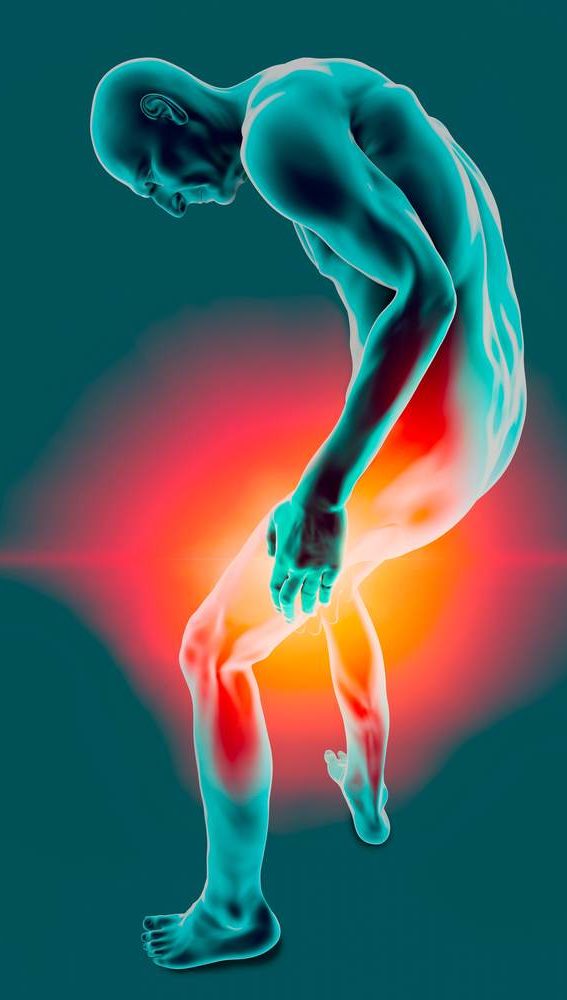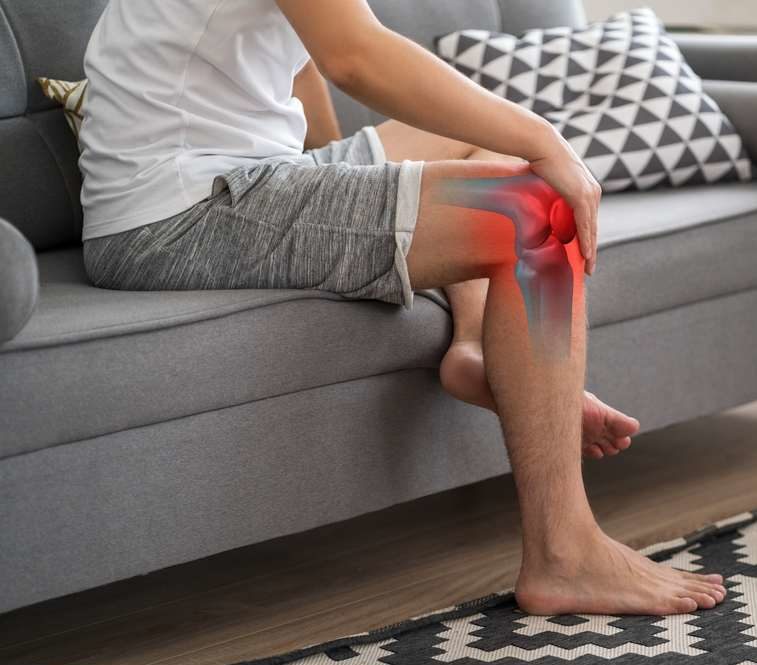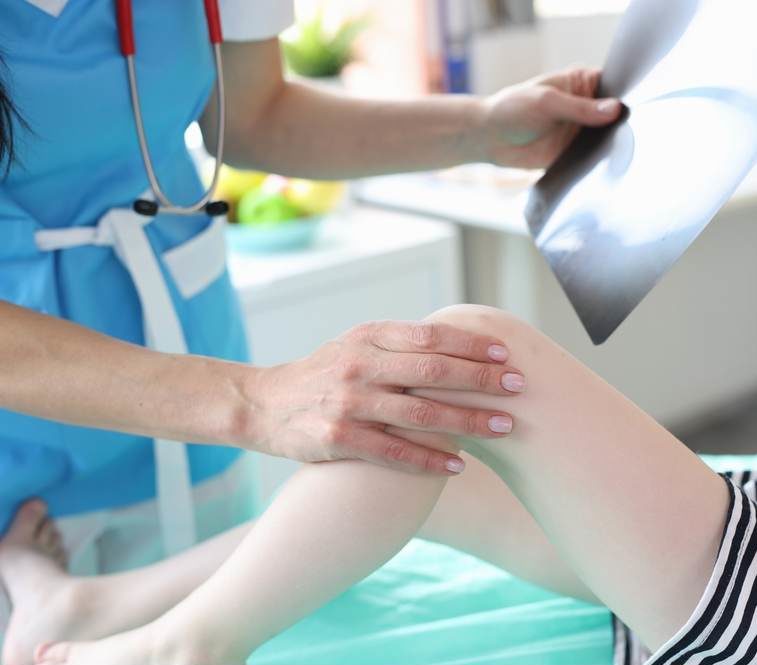
The femur is the longest and strongest bone in the body, which makes it very difficult to fracture. The most common cause of a broken femur in an elderly person is a combination of a fall and osteoporosis. For younger people, the most common cause is a car accident. Regardless of the origin of the fracture, breaking the femur is a serious injury that typically requires surgical repair by a skilled doctor to achieve the best possible outcomes. Treatment is dictated by the type of bone the femur is, what kind of fracture is present, the individual characteristics of the patient, and if any complications are present.
Understanding the Femur
The femur is a long bone, the longest in the body, in fact. The head of the femur is a round ball-like structure that sits in a cartilage-covered socket in the pelvis called the acetabulum. This joint allows the hip to move in a rotating motion while maintaining stability and weight-bearing capabilities. From the head of the femur comes the neck, a common site of femoral fracture. The neck connects the head of the femur to the length of the bone, called the shaft. The shaft ends in the distal portion of the bone, where it meets the tibia and fibula to make the knee joint.
Long bones contain a long chamber in the center, called the intramedullary canal, that is filled with bone marrow. The marrow is where red blood cells are formed, as well as white blood cells and platelets. To achieve this process, the femur is fed by several blood vessels, making it highly vascular. The femoral artery also runs alongside the femur to feed the vessels of the lower leg.
Signs and Symptoms of a Broken Femur
A broken femur is a serious injury that most often occurs due to a high-impact trauma, like a car accident or a major fall. Because the femur is the strongest bone in the body, it takes a great deal of force to fracture it, which means the signs and symptoms are usually obvious and severe. If you think you’ve broken your femur, it’s important to seek medical attention immediately. Common signs and symptoms of a femur bone fracture include:
- Immediate pain in the thigh or hip area
- Visible disfiguration of the thigh and hip
- Bruising in the hip or thigh
- Swelling in the hip, thigh, or lower leg
- Changes in the color and temperature of the leg and foot
- Inability to bear weight or move the extremity
- Bone fragments visible through the skin
Diagnosis
As with any injury, the diagnosis of a broken leg starts with a history of what happened to cause the problem and an examination of the patient. Broken femurs are very painful and result in an inability to use the leg for walking, which means most people will be diagnosed in an acute care setting like the emergency department. The doctor will also assess you for any other injuries that may have occurred at the same time.
While the diagnosis of most femoral fractures can be made readily by simple radiographs (X-rays), the doctor may order more advanced imaging such as computed tomography (CT) scan or magnetic resonance imaging (MRI) to assess for soft tissue injuries that can complicate a broken femur. At some point, a bone density scan may be ordered to see if there is any osteoporosis in the other femur that may require treatment to prevent a fracture from occurring there in the future. If the femur was broken in a car accident, you will also likely get imaging to rule out other car accident injuries.
Types of Femoral Fractures
Open

Femoral fractures will vary significantly depending on how the bone breaks and where the break occurs. The type of femur breaks will determine the appropriate treatment approach, recovery time, as well as potential complications that may arise. Here are the main types of femur fractures.
Closed
In a closed fracture, the bone breaks but does not penetrate the skin. While the skin remains intact, you can still have significant internal damage, including bruising, swelling, and injury to muscles, nerves, or blood vessels surrounding the femur.
Open Fracture
An open femoral fracture occurs when the broken bone pierces through the skin and causes an external wound. This type of fracture is especially serious because it exposes the bone and deep tissue to the outside environment, which can increase the risk of infection. In addition to repairing the bone, treatment will also include soft tissue damage and taking steps to prevent or treat infection.
Stable Fracture
A stable femoral fracture means the broken ends of the bone haven’t moved out of alignment. Because the bone pieces are still in the correct position, these fractures can be easier to treat and may not require surgery. In some cases, immobilization, rest, and physical therapy may be appropriate treatment.
Displaced Fracture
Unlike a stable fracture, a displaced femoral fracture occurs when the bone fragments are no longer aligned properly. This type of femur break usually requires surgical intervention to reposition and secure the bone using metal rods, plates, or screws for proper healing.
Shaft Fractures
Shaft fractures refer to breaks that occur in the long, straight central part of the femur, known as the femoral shaft. There are several different types of femur shaft fractures depending on the type of the break:
- Transverse Fracture: A clean, straight break that runs horizontally across the shaft of the bone. This type of fracture is typically the result of a direct blow to the thigh.
- Oblique Fracture: A diagonal break across the femoral shaft. Oblique fractures can be more unstable than transverse ones and may require surgery.
- Spiral Fracture: Caused by a twisting or rotational force, this type of fracture wraps around the bone in a spiral pattern, much like the stripe on a candy cane. These can be complex to treat, especially if the spiral causes displacement.
- Comminuted Fracture: A comminuted fracture occurs when the bone shatters into three or more pieces. These fractures are typically caused by high-energy trauma and often require extensive surgical reconstruction using hardware to piece the chipped femur bone back together.
Neck Fractures
Neck fractures are the most common type of broken femur to occur in those whose fractures are related to osteoporosis. These fractures are graded according to whether they are displaced or stable and to what extent, using the Garden Classification.
Distal Fractures
Distal fractures occur when the part of the femur that is furthest from the body and closest to the knee is broken. Due to its proximity to the knee, these fractures often include injury to that joint that will also require treatment.
How Do Broken Legs Heal?

When you break your femur, your body starts healing right away through a series of steps. First, a blood clot forms around the fracture to help protect and support the healing process. Over the next two to three weeks, your body creates a soft, cushion-like bridge made of tissue called a fibrocartilaginous callus. This acts like a temporary filler, holding the broken thigh bone pieces together while your body works on fixing the damage. As your femur continues to heal, the soft tissue gradually gets replaced by a stronger, mineral-rich bone callus. This stage, called ossification, can take one to four months. Even then, the bone isn’t fully healed.
If you’re wondering, “How long does it take for a broken femur to heal?” the answer is complicated. Since the femur is the longest and one of the largest bones in the body, the broken femur recovery time can be longer than for other broken bones. The femur fracture recovery period involves strengthening the femur and helping restore its normal shape and function so that it’s as strong as it was before the injury.
Treatment Options for a Broken Femur
Because the femur is the longest and strongest bone in your body, a femur fracture requires medical intervention to ensure proper alignment and healing. Without properly stabilizing the bone, the powerful muscles surrounding the femur can pull the bone fragments out of place, which can lead to improper healing or even long-term complications or delayed recovery time for broken femur injuries.
Surgical Stabilization
In most cases, a femur fracture requires surgery to realign and secure the bone. The type of surgical intervention will depend on the location and severity of the break. Here are some examples of what that might be like:
- Internal Fixation: If the bone fragments need stabilization, the orthopedic surgeon may use metal plates, screws, rods, or nails to hold the pieces together. These devices are placed inside the leg, which means they are not visible externally.
- Intramedullary Nailing: A common technique for femur fractures, this procedure involves inserting a metal rod into the hollow center of the bone, known as the medullary canal, to keep it stable during healing. This surgical technique provides strong internal support and can even make for a faster recovery.
- External Fixation: In severe cases where immediate internal fixation is not possible, an external fixator may be used. This involves placing metal pins or screws into the bone above and below the fracture site, which are then connected to an external stabilizing frame outside the leg. This method is often used temporarily until further surgery can be performed.
Recovery and Rehabilitation
Healing from a femur fracture is a gradual process that involves both medical intervention and a strong commitment to rehabilitation. Because the femur is the longest and strongest bone in the body, recovery can be lengthy, especially after surgical repair. The exact timeline will depend on a variety of factors, including the type and severity of the fracture, your age, overall health, and whether you’re dealing with any complications during healing.
After surgery, patients are often advised to avoid placing weight on the affected leg for several weeks or even months. During this non-weight-bearing period, mobility aids like crutches, walkers, or wheelchairs are commonly used to prevent putting strain on the healing bone. For older adults, recovery can be slower and more complex, sometimes requiring extended stays in rehabilitation centers or additional assistance at home.
Physical Therapy for a Femur Bone Fracture
Physical therapy is more than just a supplement to healing; it’s an essential part of restoring full function after a femur fracture. A personalized treatment and rehabilitation plan will help restore function, prevent stiffness, and rebuild the strength you need for everyday movement. Physical therapy treatments will typically begin gently and become more intensive as your healing progresses. Therapy sessions often include functional training to help you return to everyday tasks like climbing stairs, getting in and out of a car, or walking without assistance. A typical rehab program may include:
- Range-of-motion exercises maintain flexibility in the hip and knee joints and prevent stiffness during periods of limited movement.
- Strength training targets the thigh, hip, and core muscles to provide better support for the healing bone and improve overall stability.
- Gradual weight-bearing activities as the bone heals and becomes strong enough to tolerate pressure, helping you transition safely back to walking and daily activities.
A consistent physical therapy routine not only supports physical healing but also helps build confidence in using the injured leg again. Plus, consistent follow-up care with your orthopedic team is key for proper bone healing and allows for adjustments to your rehab plan if needed. With time, effort, and support, most people can return to their normal routines, although some may experience lingering weakness or stiffness that requires ongoing care.
Supporting Bone Healing
Recovering from a broken femur is a lengthy process, but with proper treatment, rehabilitation, and self-care, most patients regain full function and return to their normal activities. Several factors can influence how well and how quickly the femur heals from a fracture. To make the best of your recovery, here are some suggestions:
- Follow your doctor’s instructions carefully, including taking prescribed medications, attending follow-up appointments, and following all weight-bearing restrictions.
- Watch for signs of complications, such as increased pain, swelling, redness, or signs of infection, and report them to your doctor immediately.
- Avoid smoking and excessive alcohol consumption since both can slow bone healing and increase the risk of complications.
Complications of a Broken Femur
Complications of a broken femur can be very mild to life-threatening, which makes it critical to discuss with your provider what risks you have personally and what signs and symptoms of these complications they want to be notified of immediately. Many factors influence the risk for such complications, such as how the leg was broken, age, weight, diet, medications, bone density, and more.
- Blood Loss can occur from the tearing of surrounding blood vessels and those that feed the bone itself. This blood loss can be severe, even in a closed fracture where the bleeding occurs into the tissue of the thigh. Damage to blood vessels can also lead to blood clots that can impair blood flow to the rest of the leg.
- Fat Embolisms happen when a tiny portion of the bone marrow, which is rich in fat, breaks off and enters the bloodstream. These little pieces of fatty marrow can then lodge in the lungs and cause a pulmonary embolism. While this is rare, it is a recognized complication of a broken femur.
- Shortened Limb is a risk of a severely comminuted fracture since aligning the pieces can sometimes result in a slight difference in the bone length after healing.
- Avascular Necrosis occurs when there is a lack of blood flow to the bone, causing it to become necrotic (dead). This is more common in fractures to the neck and head of the femur.
- Infection is a significant risk in patients who suffer an open fracture of the femur since the skin and tissue beneath are open to the environment. To reduce this risk, antibiotics are often part of the care plan for people with open fractures.
- Compartment Syndrome happens when the swelling in the muscles and other soft tissues of the thigh begins to compress blood vessels and nerves in the leg, preventing blood flow to the thigh and lower extremities. This pressure has to be relieved to save the tissue of the leg from harm.
- Nonunion is when two or more fragments of bone broken do not heal back together.
Broken Femur Care at AICA Orthopedics
The single best way to prevent complications of a broken femur is to seek out the care of an experienced and skilled provider who can ensure your care is managed appropriately. The doctors at AICA College Park are available to help you heal and recover, so get in touch today to schedule your appointment.